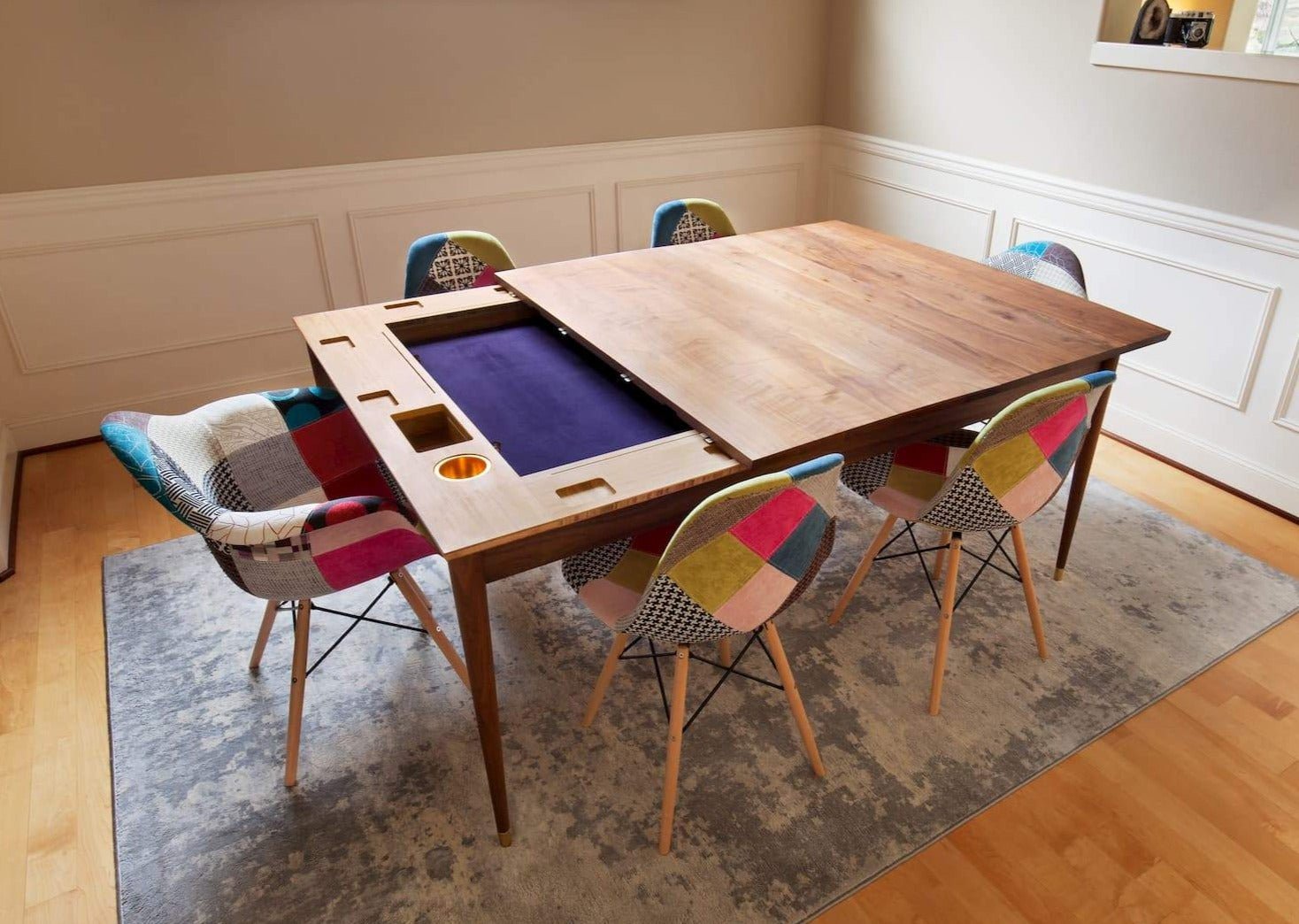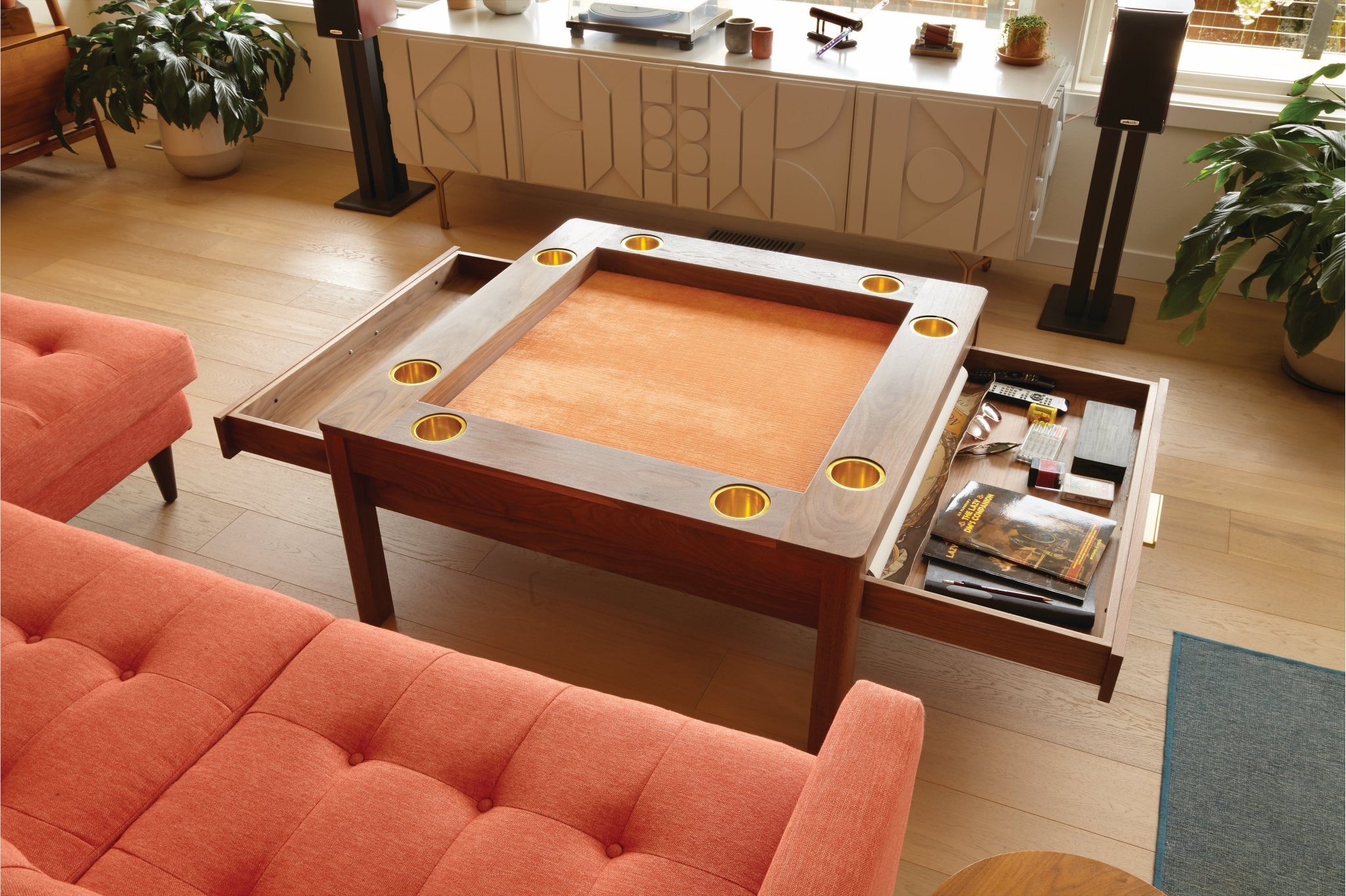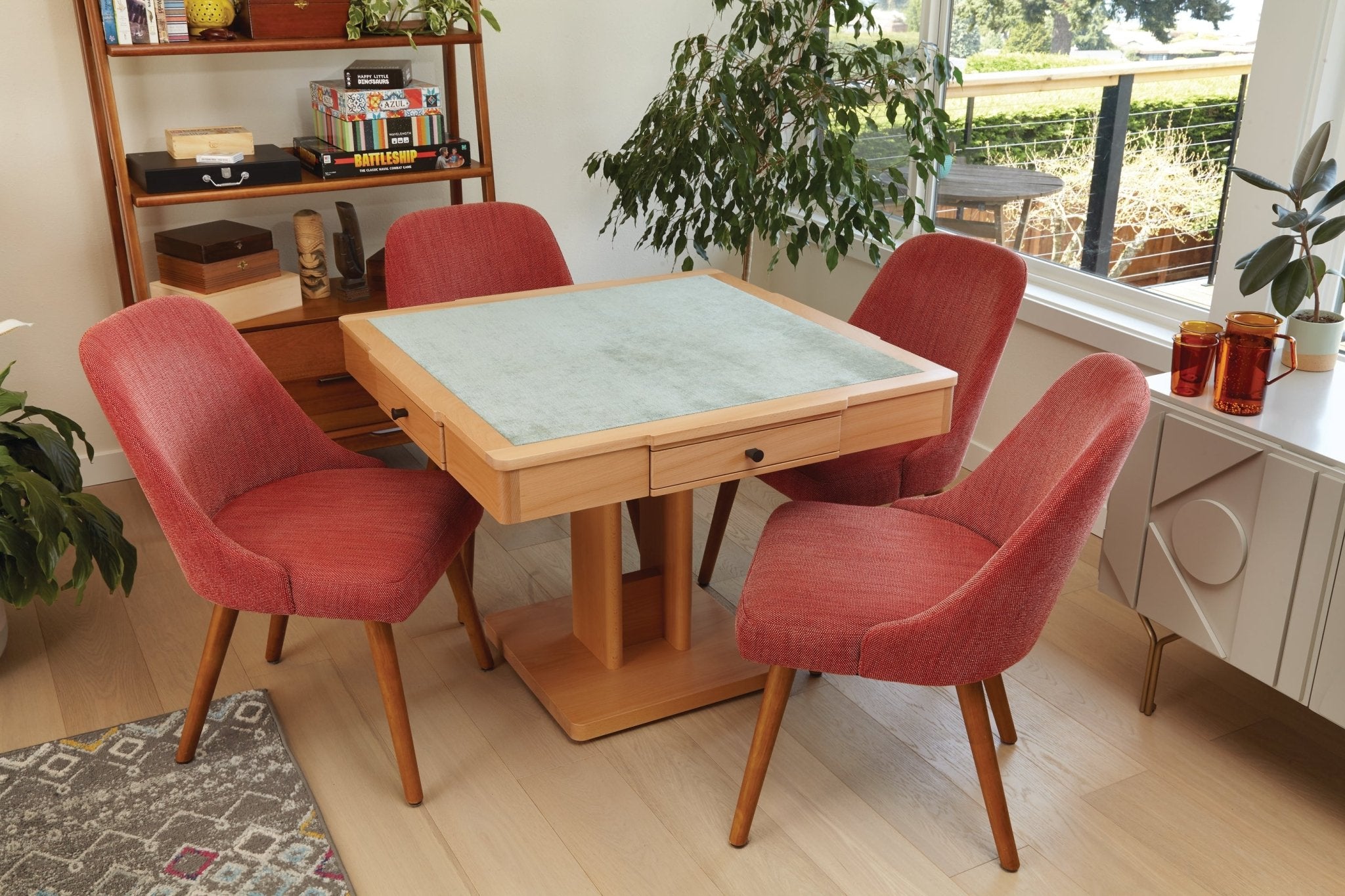How To Divide A Small Living Room And Dining Room Combo
Living in a home where your living room and dining area share the same space can feel cramped and messy. But you don't need a bigger home to make it work.
With some inspiration and imagination, you can create two distinct areas that feel functional and inviting without losing that open, airy vibe.
To help you get started, we’ve gathered eight practical ideas to turn your small combo space into two areas that work perfectly together.
Ready? Let's go!

8 Tips to Divide Your Small Living Room and Dining Room Combo
Here are eight nifty ways to make the most of your living and dining room combo areas:
Tip #1: Keep furniture away from the walls
One of the biggest mistakes people make in small spaces is pushing all the furniture up against the walls. In a shared living-dining combo area, this can make everything feel flat.
Instead, try placing your sofa in the center of the room, with its back facing the dining area. This instantly creates a natural room divider, transforming one space into two rooms. Position the dining table on the other side and bring it together with a statement light fixture overhead. Suddenly, you've got two separate living spaces without building a single wall.
Tip #2: Opt for convertible tables
Small space? No problem! A convertible dining table is the way to go. With just a quick adjustment, it can switch from family dinners to a home office desk or even a game-night hub in minutes.
Take our Dresden table, for example: one minute you're entertaining guests, the next you're ready for night-long game sessions. Built-in storage compartments keep the table linens, board games, and other essentials tucked away, so clutter doesn't creep into your space. Plus, it's custom-made in a range of sizes, growing and shrinking to fit your needs perfectly.
Tip #3: Go with multi-functional furniture
In a multipurpose dining room, every piece of furniture should pull double duty. Space-saving, multi-functional designs make every square inch count and keep your home more organized.
We've already mentioned convertible dining room tables, but don't stop there. Think storage ottomans that store blankets, coffee tables with hidden drawers for books and remotes, or fold-away systems that transform into dining tables, desks, or even hidden storage units.
Modular sofas are another smart choice, letting you reconfigure your floor space according to your needs. And don't overlook drop-leaf tables: slim console counters when not in use and instantly expandable when it's time to eat.

Tip #4: Master lighting like an interior designer
Lighting is a designer’s secret weapon for shaping a room; it creates invisible boundaries that feel just as real as physical walls without closing off the space. The trick is to give each zone its own glow to set the mood.
Over the dining room table, go bold with a chandelier or hanging pendant to anchor the space. Choose something striking so it becomes the room's focal point.
Then switch the vibe in the living room area with softer, layered lighting, like cozy floor lamps, warm table lamps, or even playful string lights. Together, they send a clear message: "This is the chill zone."
Tip #5: Define zones with rugs
Rugs are another way to separate your living and dining spaces. You'll be amazed at how nothing creates clear boundaries as effortlessly as well-placed area rugs.
But you don't need two identical designs to define your zones. It's better to choose rugs that complement each other without being matchy-matchy. For example, try a large, jute rug under the dining table and a softer rug under the coffee table. This contrast signals where one area stops and the other begins.
Top tip: Make sure each rug is the right size. For instance, in the dining area, all four chairs should stay on the rug (even when pulled out) to make the space feel intentional and practical.
Tip #6: Be strategic with seating
The way you arrange your seating can make or break a shared space. As mentioned, instead of pushing your sofa against the wall, float it opposite your dining room table to act as a natural room divider. This instantly gives both areas their own "zone".
Accent chairs are another smart idea. Angle one toward the sofa to create a cozy conversation corner, while subtly turning its back to the dining space. This trick draws the eye toward the living area and makes the transition between areas less obvious.
Don't forget about dining seating, either. L-shaped benches, slim banquettes, or stackable seating can save space while still defining the dining area. They tuck in tightly when not in use without crowding the room.
Tip #7: Use color psychology to your advantage
Color creates psychological boundaries that shape how a space feels and functions. In a shared living room-dining room, even subtle shifts in tone can have a striking impact on the space.
Try painting an accent wall behind your dining area in a darker hue than your living room walls. This contrast instantly adds depth and makes the dining area feel like its own destination. Wallpaper works wonders, too!
Not ready to paint? No problem! Use accessories, decor, framed artwork, wall-cladding, and textiles to zone the space instead. Think warm terracotta cushions and throws to cozy up the living area, paired with cooler sage greens in the dining room. The result? Two spaces that feel like their own.
Tip #8: Style your storage
Why settle for walls when storage can double up as a room divider? Tall shelving units or floor-to-ceiling storage define areas neatly without blocking natural light or making you feel boxed in.
Open shelving or bookcases, like our Eolian shelving system, are especially handy. Style them with books, indoor plants, art, and decorative pieces on the living room side, while the dining side can hold serving dishes, glassware, and napkins. Simple, yet effective!
3 Stunning Design Styles for Your Living Room and Dining Room Combo
Here are three design styles to spark your creativity and inspire you to take action in your shared space:
1. Neutral living room dining room combo
-
Color palette: Opt for neutral tones like soft whites, warm beiges, and cream with subtle gray undertones. Add depth with charcoal, navy, or natural wood accents.
-
Textures: Choose linen upholstery, jute area rugs, and light wood furniture. Try vertical wall paneling behind the dining area for a subtle accent. Include woven baskets and ceramic decor.
-
Furniture: Consider our Mimosa table in a light oak finish to anchor the dining room area. Pair it with linen dining chairs and a cream sectional sofa with scatter pillows in natural fabrics.
-
Lighting: Hang brass pendant lights over the dining table to create the perfect centerpiece. Add floor lamps with linen shades and candles in ceramic holders for ambience.
2. Eclectic living and dining room area
-
Color palette: Start with a warm white base, then layer in terracotta, sage green, maroon, and deep navy. Add pops of color like mustard yellow and bright pink through fabric covers, throws, and accessories.
-
Textures: The options are endless. Mix plush velvet dining chairs with a rattan coffee table. Use bold paints or vibrant wallpaper as an accent wall in the eating area. Gallery walls with vintage posters or small paintings are also a smart accent wall idea. Layer Persian rugs over jute carpets for depth.
-
Furniture: Anchor the living room with our Firefly gaming coffee table, complete with teal fabric lining for a subtle pop of color. Around the dining table, mix and match wooden chairs topped with velvet cushions to add depth and character. For extra zoning and storage, bring in vintage sideboards or raw wood bookshelves to help define each section.
-
Lighting: Opt for statement chandeliers in the dining room. Mix table lamps from different eras and add string lights for a whimsical feel.
3. Modern living room dining room combo
-
Color palette: Start with a clean foundation of crisp whites and cool grays, then layer in sleek black and metallic accents; chrome for a modern edge or gold for a touch of warmth. To keep the rooms from feeling flat, introduce a single bold accent color, such as electric blue or deep emerald green, for immediate visual impact.
-
Textures: Go for glossy surfaces, large porcelain tiles, raw concrete, and smooth leather seating. Use sliding wood panels or metal-framed bookcases as room dividers. Bring in glass, chrome, or gold accessories.
-
Furniture: Consider our Dresden table in a walnut finish to create a stunning centerpiece. Choose dining chairs with metal frames and a low-profile modular sofa in charcoal gray or black leather. Add a glass console table behind the sofa and floating shelves for a modern touch.
-
Lighting: Incorporate dramatic pendant lights with geometric shapes over the dining space. LED strips under floating shelves and behind furniture create an ambient glow. Choose fittings and accessories in matte black, brushed chrome, or gold.
FAQs
Should I use the same flooring throughout a combo room?
Yes, consistent flooring creates flow and makes small spaces appear larger. Use area rugs to define zones rather than using different flooring materials.
What not to do when decorating a small living room?
Don't overcrowd a small space with bulky furnishings, pushing everything against the wall, or using too many dark colors. All of these make the space feel smaller and cluttered. Instead, keep things light, in proportion, and clutter-free.
Final Thoughts
Dividing a small living room and dining room combo doesn't have to be a design headache.
With smart furniture choices, clever storage, and a few design tricks, you can turn one room into two stylish and functional spaces.
And if you're ready to upgrade your space with new custom-built dining and gaming furniture, explore BandPass Designs' nifty options today.



